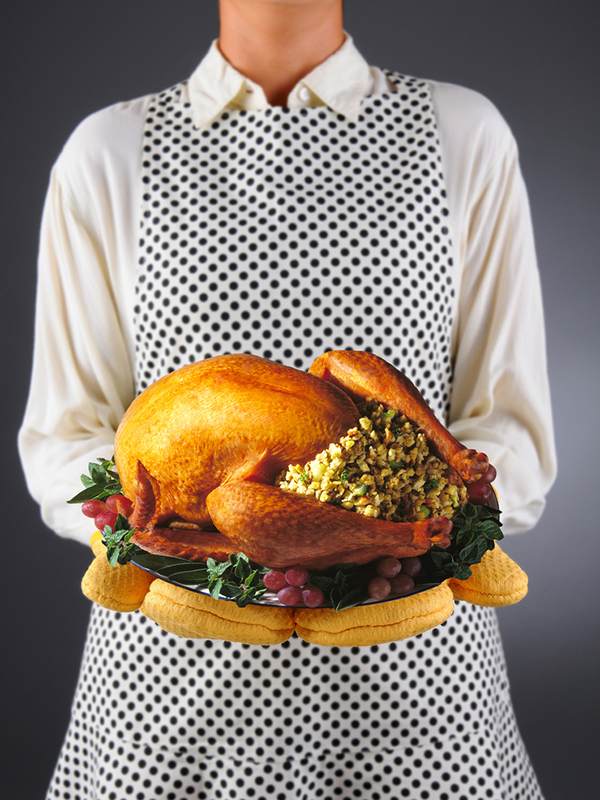Have you ever produced a Thanksgiving turkey that looks succulent and varnished on the outside, only to discover it’s dry as the Mojave Desert on the inside? Do your experiences conjure up memories of the parched bird from National Lampoon’s Christmas Vacation? Well, the absolute, sure-fire cure to a dry turkey is brining. Although it may seem like a new fad, brining is actually an ancient method that has thankfully come back in fashion. So what is all the hype about?
Brining, the process of soaking the bird in a mixture of water, salt, sugar, herbs and spices, assists a turkey in retaining its moisture while infusing the bird, uniformly, with the herbs and spices. The brine hydrates the cells of the bird’s tissue and enables it to retain water through the cooking process. Further, the water retention helps “cushion” the breast, which actually needs less cooking time than the thigh and ensures that it stays juicy and delectable. As a matter of fact, a brined turkey, once cooked, gains up to half a pound as opposed to a non-brined turkey that loses weight during roasting. So, why not give it a whirl!
How to do it:
First thing’s first – the bird. When brining a turkey, you should avoid purchasing a bird that is kosher, flavor-enhanced or self-basting as the end result will be far too salty. Go for a natural turkey that doesn’t include any added flavoring or salt.
Next, buy a large brining bag (from a cooking store such as Williams Sonoma) or a large poultry-roasting bag to brine the turkey in. If you’re having a difficult time finding one of these, you can also use a large bucket; the orange big daddies from Home Depot will do the trick.
Now it’s time to prepare your brine. Use a portion of the recipe’s water to heat up the salt, sugar, herbs and spices; this will dissolve the granules. Then, mix the heated solution up with the remaining water and wine. Add ice cubes to the mix then drop in the bird once you’ve rinsed and removed the giblets and neck. Seal the bag and place it in the refrigerator for at least 12 hours. Flip the bird upside down once. After brining, rinse the turkey then pat that girl dry so she can brown. Next, cover the skin with olive oil or butter and pepper; there is no need to salt the bird after brining. I personally like to rub butter or olive oil underneath the skin of the breast as well then stuff the cavity of the turkey with rosemary and garlic. Your choice. Cover the breast of the turkey with aluminum foil to protect the skin for the first half of cooking then roast slowly until the bird reaches 165 Fahrenheit.
The following is a recipe for a 20-pound turkey. You can adjust spices according to your taste and alter measurements for the size of your turkey.
30 cups of water
1 ½ cups course salt (sea salt or kosher salt)
½ cup brown sugar
7 bay leaves
2 ½ TB Black peppercorns
7 garlic cloves
several sprigs of rosemary (Fresh)
several sprigs of thyme (Fresh)
1 TB dried sage
1 tsp mustard seeds
7 garlic cloves
1 small onion, sliced
2 cups dry white wine
Happy Thanksgiving and Bon Appetit!












